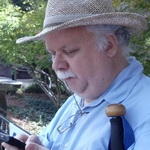I agree that EEG can help determine whether a central is significant for a particular patient (by determining whether the central is a sleep-onset central, for example) but the event is technically a central either way, as I understand it. In fact, for some patients, repetitive sleep-onset centrals can be particularly significant as a factor in sleep-initiation insomnia, from what I've read. In other words, instability at transitions can, in and of itself, be pathological, for some patients, I believe. I agree that for most of us, occasional sleep-onset centrals or stage-transition centrals are perfectly harmless. But they are centrals nonetheless. At least to some docs, depending on what they are looking for with a particular patient.JohnBFisher wrote:They also use the EEG leads to determine a central apnea. If there is no breating for 10 seconds and no effort during that time (as determined by the belts) *AND* as determined by the EEG leads the patient is not in a transition to or from sleep, then it is determined to be a central sleep apnea.
I could have that all wrong though. I hope NotMuffy or -SWS or someone would correct me if I got that wrong, whether I liked it or not.
Oops. Sorry, John; I realize now I was preaching to the choir:
viewtopic.php?p=457468#p457468










